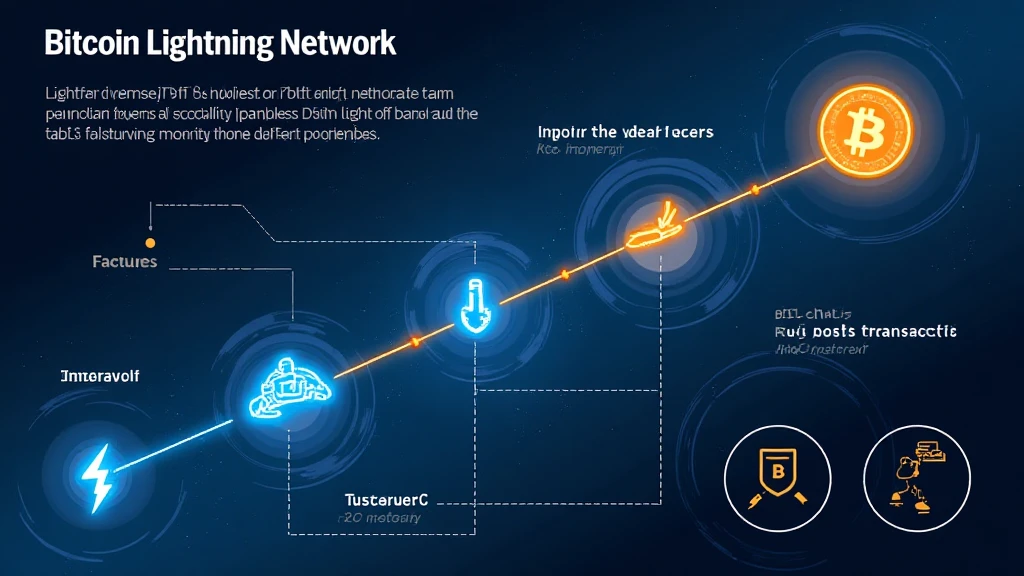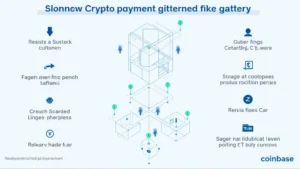Bitcoin Lightning Network Scalability: Overcoming the Bottleneck
With the growth of the Bitcoin blockchain, scalability has become a pressing issue, leading us to innovative solutions like the Bitcoin Lightning Network. As the demand for faster transactions surges, understanding how this network can take the pressure off standard Bitcoin transfers is crucial.
Understanding Scalability Challenges
Scalability refers to a system’s ability to handle a growing amount of work, or its potential to accommodate growth. For Bitcoin, this translates to the number of transactions it can process per second, which currently sits at about 7. This figure is significantly lower compared to traditional payment networks, leading to long wait times and high fees during peak usage. The inception of the Bitcoin Lightning Network aims to address these limitations.
Current State of Bitcoin Transactions
In recent years, Bitcoin has seen substantial transaction volume growth. According to a report by Blockchain.com, in 2023 alone, Bitcoin handled over 200 million transactions globally. However, high demand has often led to network congestion, illustrated by the transaction fee spikes that can exceed $60 during peak times.

The Bitcoin Lightning Network: An Overview
The Bitcoin Lightning Network is a secondary layer built on the Bitcoin blockchain that facilitates off-chain transactions. This mechanism allows users to open payment channels between themselves, enabling near-instant transactions without needing to register each one on the main blockchain.
How It Works
- Payment Channels: Users set up a channel with another party, locking a certain amount of Bitcoin in a multi-signature address.
- Instant Transactions: Transactions can occur instantly between the parties involved in the channel without waiting for blockchain confirmations.
- Closing the Channel: When users want to settle their transactions, they can close the channel, updating the blockchain with the final balances.
This structural design plays out like a series of bank vaults; much like how depositing money reduces the load on a bank’s main ledger, the Lightning Network alleviates pressure on Bitcoin’s primary chain.
Real-World Application and Adoption
One interesting statistic is that the number of Lightning Network nodes has increased by 120% over the past year, reflecting growing interest and understanding. More businesses are integrating Lightning payments, particularly in regions such as Vietnam, where cryptocurrency adoption is soaring. Reports indicate a 250% growth in crypto usage among Vietnamese users in the last 12 months.
Benefits for Users
- Lower Fees: By moving transactions off-chain, fees drop significantly, often to mere cents or even fractions of a cent.
- Enhanced Speed: Transactions occur nearly instantaneously, providing an excellent user experience.
- Scalability: The network’s capacity to facilitate millions of transactions quickly is a game changer for everyday users and businesses.
Challenges Facing the Lightning Network
Despite its advantages, the Lightning Network does face challenges: issues related to network liquidity, user experience, and satisfactory handling of large payments can be problematic. Security concerns also arise regarding the custody of funds within payment channels and potential network routing failures.
Addressing Network Liquidity
Network liquidity is paramount; for a transaction to be successful, there needs to be sufficient funds in the channel. To enhance liquidity, users might need to engage in liquidity management strategies, like providing liquidity to others’ channels or using automated market-making services.
The Future of Bitcoin Lightning Network Scalability
As things stand, projections indicate that the Lightning Network could handle up to 1 million transactions per second by 2025. This is akin to the capacity of traditional payment systems, showing significant promise for Bitcoin as a payment solution on a global scale.
Vietnam’s Role in the Lightning Network Growth
As mentioned, Vietnam’s rapid crypto adoption offers an exciting insight into how different markets can utilize this technology. The Vietnamese government is exploring regulatory frameworks around cryptocurrencies, facilitating a smoother integration of Lightning payments into daily commerce, which can further accelerate user growth.
Conclusion: Paving the Future with Lightning
In conclusion, the Bitcoin Lightning Network holds the key to scaling Bitcoin to meet the demands of a growing global economy. As users gain access to faster, cheaper transactions, the potential for mainstream adoption expands significantly. Through continuous improvements and strategic localizations (like targeting areas with high growth like Vietnam), the network can overcome existing challenges and become an indispensable tool in the cryptocurrency landscape.
At bitcoincashblender, we strive to provide resources and solutions that highlight the benefits of innovative technologies like the Bitcoin Lightning Network, advocating for advancements that meet the needs of a diverse user base.
By enhancing our understanding and implementation of this technology, we can envision a more scalable and accessible future for Bitcoin and digital assets worldwide.











